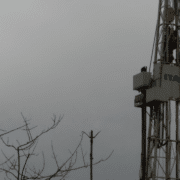The market is beginning to give credence to something we’ve been discussing in past years concerning the increasing oil price.
In a June 2020 article entitled, Underinvestment Could Send Oil Prices Soaring, I argued how the retrenchment and lack of capital investment the industry has seen over the past five years would lead to shortages of crude eventually. The huge volume of Saudi overproduction exacerbated the equal largess in American shale for the past couple of years and led to a glut of crude globally.
EIA-WPSR The blue line shows weekly storage numbers beginning to edge back into the five-year range.
We are now starting to work off this glut as noted in the weekly EIA petroleum status report above, and the day of reckoning I forecast in June is just around the corner, a few months hence at most. Even the news in July that OPEC+ would start restoring as much as two-million BOPD through the end of the year, failed to quiet the unease beginning to take hold in the market. News like that would have sent prices into the cellar in May, having left the current contracts above $41 for WTI and near $45 for Brent.
Click here to read the full article.
If you have further questions related to the increasing oil price, feel free to contact us here.










